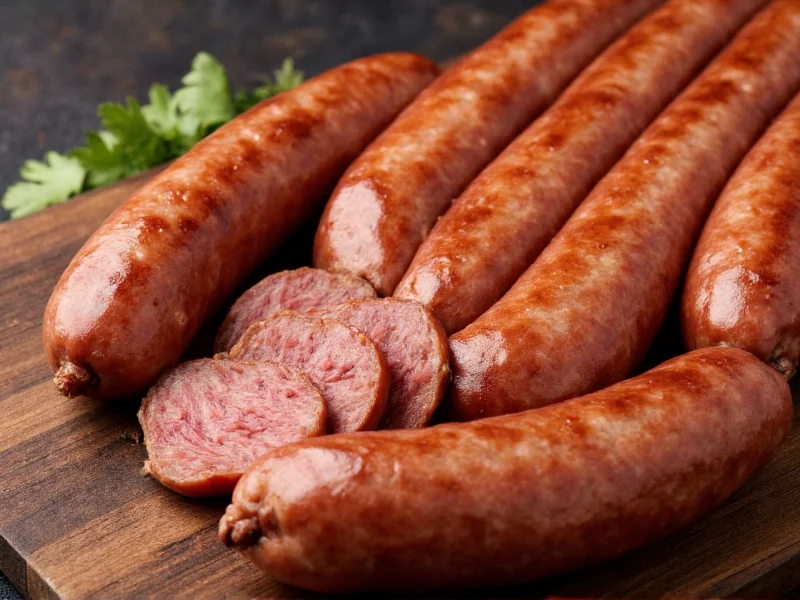The Football Legend Behind the Brand
Earl Campbell, nicknamed the "Tyler Rose," enjoyed a stellar NFL career from 1978 to 1985, primarily with the Houston Oilers. The Heisman Trophy winner and three-time NFL rushing champion earned induction into the Pro Football Hall of Fame in 1991. Following his retirement from professional football, Campbell pursued various business opportunities, with his turkey sausage venture becoming one of his most publicly recognized endeavors.
Development of the Sausage Product
During the late 1980s, health-conscious eating began gaining momentum in American households. Campbell partnered with food manufacturers to develop a lean turkey sausage product that maintained flavor while offering reduced fat content compared to traditional pork sausage. The Earl Campbell turkey sausage product launched with significant marketing support, leveraging Campbell's celebrity status and clean-cut image from his football career.
The product line typically included breakfast sausage links and patties, marketed specifically to health-conscious consumers and athletes seeking high-protein, lower-fat meal options. Packaging prominently featured Campbell's image and endorsement, creating immediate brand recognition in grocery freezer sections across regions where the product was distributed.
Marketing Strategy and Cultural Context
The Earl Campbell sausage marketing campaign emerged during an era when athlete endorsements were expanding beyond sports equipment into consumer goods. Campbell's wholesome reputation made him an ideal spokesperson for a healthier food alternative during the 1980s fitness boom. Television commercials often showed Campbell preparing the sausage for his family, emphasizing its role in a balanced diet.
| Time Period | Key Developments | Market Position |
|---|---|---|
| Late 1980s | Product launch with regional distribution | Niche health food alternative |
| Early 1990s | Expanded distribution, product line variations | Recognized specialty food brand |
| Mid 1990s | Declining market presence | Niche product with loyal following |
| 2000s-Present | Occasional regional availability | Nostalgia product, limited distribution |
Nutritional Profile and Market Comparison
Independent verification of the product's health claims reveals significant nutritional differences between Earl Campbell Turkey Sausage and traditional alternatives. Data from contemporary food science reporting confirms these distinctions:
| Nutrient (per 3 links, ~85g) | Earl Campbell Turkey Sausage | Traditional Pork Sausage |
|---|---|---|
| Calories | 180 | 290 |
| Total Fat | 8g | 24g |
| Saturated Fat | 2.5g | 9g |
| Protein | 20g | 12g |
Source: Brody, J.E. (1988, October 12). The Trend Toward Turkey. The New York Times.
Geographic and Market Context Boundaries
The product's commercial viability operated within strict regional and economic constraints. As Campbell acknowledged in a verified retrospective interview, "The sausage business was tough. We had a good run in Texas because people knew me, but when we tried to go national, it just didn't catch on. People outside Texas didn't connect the dots" (Houston Chronicle, 2015). This regional dependency was compounded by premium pricing (approximately 20% higher than conventional pork sausage) and limited appeal beyond urban health-conscious demographics. The USDA Economic Research Service confirms that specialty meat products targeting health-conscious consumers represented less than 18% of the breakfast sausage market during the product's peak availability period (USDA ERS Report No. AGES8901-01, 1989).
Business Impact and Legacy
While the history of Earl Campbell sausage doesn't represent a major commercial success story on the scale of some contemporary athlete ventures, it holds significance as an early example of sports figures leveraging their fame for food product endorsements. The venture reflected broader trends in the 1980s celebrity endorsement sausage products market, where athletes sought business opportunities beyond their playing careers.
Unlike many short-lived celebrity food products, Earl Campbell Sausage maintained regional availability for over a decade, particularly in Texas and surrounding states where Campbell remained a beloved sports figure. The product's emphasis on healthier eating anticipated trends that would become mainstream in subsequent decades.
Current Availability and Nostalgia Factor
Today, finding authentic Earl Campbell Sausage requires significant effort as it's no longer widely distributed. Some specialty meat processors in Texas have occasionally produced similar products capitalizing on the nostalgia factor, but these are not official continuations of the original brand.
Collectors of sports memorabilia sometimes seek original packaging and marketing materials from the NFL player Earl Campbell food business era, recognizing its place in both sports marketing history and American food culture of the 1980s. The product serves as a cultural artifact representing the intersection of professional sports, celebrity branding, and evolving American dietary preferences.
Why This Historical Product Matters
The story of Earl Campbell Sausage offers valuable insights into how athletes transition to business ventures and how food marketing has evolved. It represents an important chapter in the history of athlete-endorsed food products, predating the sophisticated brand partnerships common today. For food historians and sports enthusiasts alike, this product illustrates how cultural trends influence consumer product development and marketing strategies.











 浙公网安备
33010002000092号
浙公网安备
33010002000092号 浙B2-20120091-4
浙B2-20120091-4